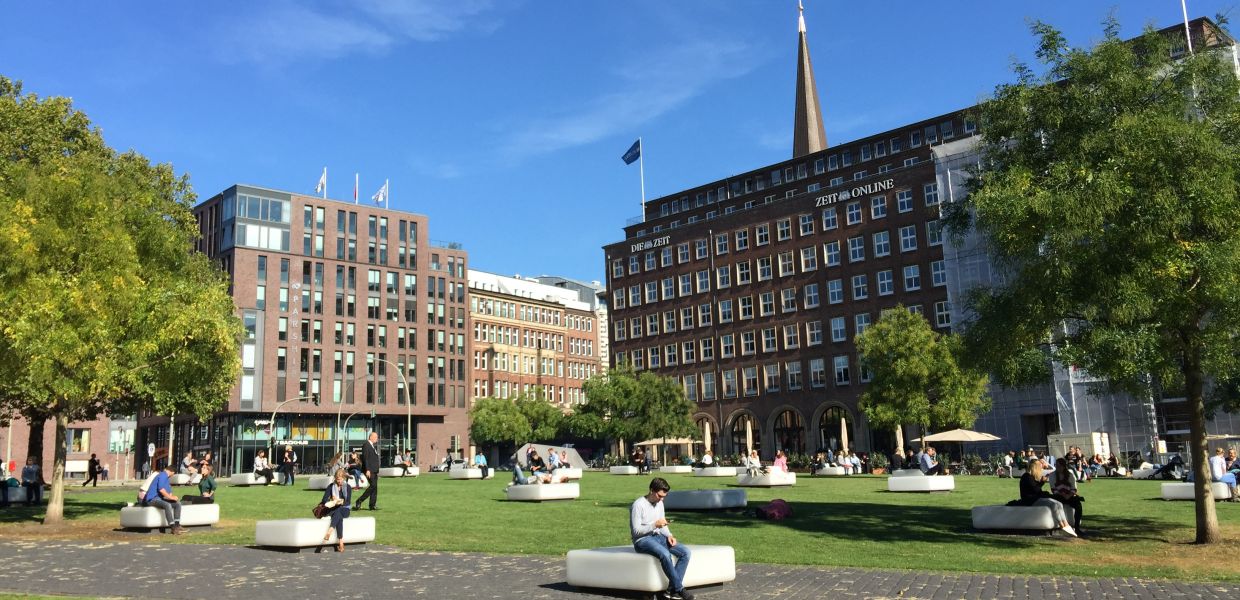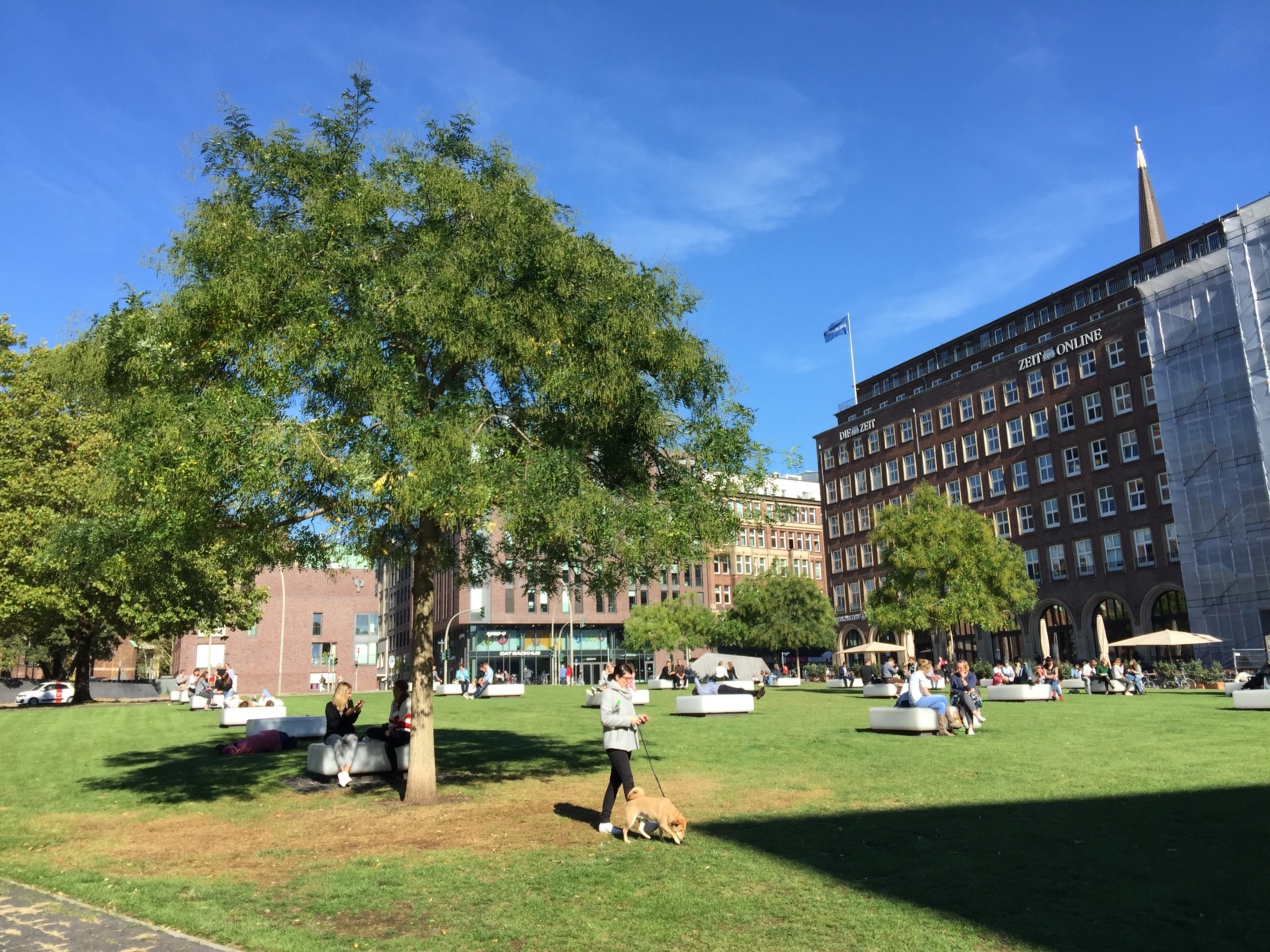What the Europeana Impact Playbook taught a city about revitalising an inner city square
In our latest Impact case study, we hear from Professor Jens Bley, co-founder of eCultureLab and initiator of SmartSquare, an initiative using digital culture in the revitalisation of an urban square in Hamburg, Germany. Read on to find out more on some of the theoretical questions posed by running an impact assessment with multiple stakeholders.

- Title:
- SmartSquare, Hamburg
- Creator:
- Jens Bley
- Date:
- 2018
- Country:
- Germany
- Copyright:
- CC BY-SA
Our project
SmartSquare is about the revitalisation of an inner city square in Hamburg, Germany, by means of cultural storytelling, data analytics, simulation and service scenarios. The square is the founding area of Hamburg, close to the most frequented shopping streets of the city, yet lesser used. Hardly anyone knows that this is the birthplace of Hamburg.
We have multiple stakeholders that are relevant in our SmartSquare urban testbed project. The project partners are the eCultureLab and CityScienceLab of the HafenCity University, the Archaeological Museum Hamburg and Hamburg@Work, the cluster of digital economy in Hamburg. Added to this, at the SmartSquare itself the church, the civic foundation, retailers, the district municipality and the Archaeological Museum are all relevant stakeholders. These stakeholders have different yet also overlapping cultural, social and economic impact perspectives that can enhance the project. It’s vital for us to understand these different impacts to ensure we continue to provide a service that makes a real difference to these stakeholders, and the city and people of Hamburg.

Our Impact Assessment journey
Our Impact assessment looks into the (potential) effect of cultural storytelling with digital signage (in shop windows for example), chatbots, audio tours, beacon paths etc. to increase the physical usage of the square, its relevance and the cultural awareness of people, as well as service scenarios that are developed.
We observe the square with analog and digital means in regard to the frequency of people, their pathways, their time spent, the interaction with the cultural installations (physical and digital) and the social media communication about the square and its cultural meaning.
To begin with we held impact workshops with three major stakeholders that are also residents at the square: the Archaeological Museum, the main church St. Petri and the organisation of civic foundations. We focused on the impact perspectives, the measurability of such impacts and the activities. In the course of these workshops we have adapted the process (starting with impact perspectives) and reported this back to the impact modelling team.
The impact workshops were very helpful in identifying the impact perspectives and the commonalities between multiple stakeholders, offering cooperation potentials to achieve a greater joint impact. One unexpected but reassuring outcome from this process was that our stakeholders were surprised how many activities and partial strategies they had in place already, but without having them organised in impact perspectives. The Europeana Impact Playbook allowed them to structure these and make the whole process less daunting and more manageable.
Our next steps are to bundle the “results” from all the stakeholder workshops into a joint impact perspective matrix and analyse the tangible cooperation potentials between the stakeholders. With these joint impact perspectives we can start to connect and coordinate some of the individual activities of the stakeholders into a more unified and joint activity plan.

Our findings so far
-
We found it of utmost importance to get senior executives of stakeholders involved in our impact perspectives workshop. This created a bigger buy-in into a workshop-driven process.
-
We found that there is a fine line between the social and economic impact perspectives, however it is important to collect all these perspectives even if they might appear double in the different categories. For example, both the church and the archaeological museum view the potentially increased content-driven contacts with citizens not only as a means to thought leadership and cultural information dissemination, but also as a means to convert these citizens into paying users of their facilities or donors.
-
Finally, we found that the discussion about measurability of each impact perspective is key to a true outcome of the impact process. It converts lofty perspectives into tangible avenues. We have analysed the impact perspectives jointly with the stakeholders in regard to their ability and requirements to deliver on such an impact perspective and their own accountability. For example, ‘thought leadership’ can be measured by quotations, but also by usage of so-called certified content by city guides. We consider these tangible outcomes of activities in the context of impact perspectives.

Our recommendations
Use the Europeana Impact Playbook as a process to organise your desired and your actual impact perspectives and then map your current activities against this matrix. It will show that there are many activities that can be clustered into a more meaningful strategic impact roadmap. In a multiple stakeholder setting like ours, the impact perspectives have to very clearly stated in order to be able to assess cooperation potential or adverse momentum.
If you are interested in planning and running your own impact workshop, download our Impact Playbook for a step-by-step guide.

